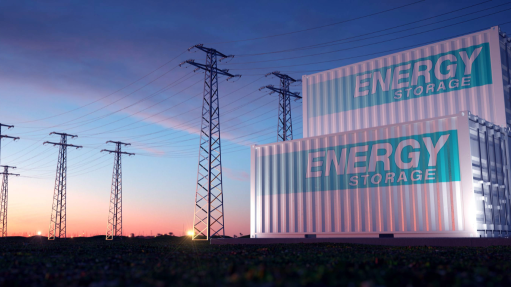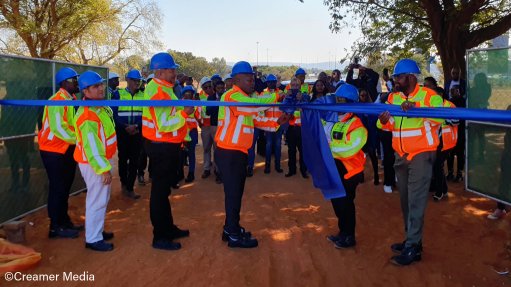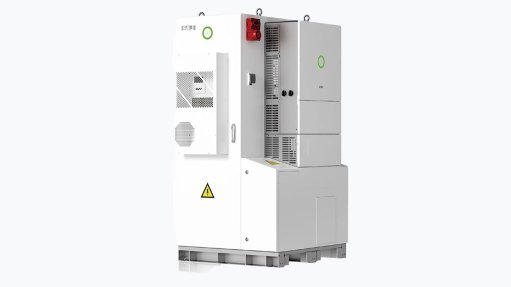Green-energy-powered ship docks in Cape Town, vessel number two in the works
The zero-emission, green-energy-powered Energy Observer (EO) last month docked in Cape Town for a visit of just more than a week.
The vessel, which acts as an on-the-water laboratory able to test various forms of environment-friendly energy, is covered in 202 m2 of solar panels.
It also has two small sails, built to minimise shade on the solar-panel-covered deck.
The EO’s other main energy source is hydrogen, with the vessel able to produce the gas on board from seawater.
In order to propel the ship with the hydrogen – especially at night – the EO uses fuel cells that have been adapted from the Toyota Mirai fuel cell sedan.
Toyota is also a technology partner in the EO project, along with industrial gas specialist Air Liquide.
The chemical process to create electricity from seawater also produces hot water and heat for the crew’s use, explains EO technical director Didier Bouix.
“The vessel is completely autonomous in terms of energy.”
The France-based EO, acting as an advocate for the expanded implementation of green power worldwide, has already sailed more than 50 000 nautical miles since 2017, with Cape Town its eightieth port of call.
The EO’s journey is scheduled to come to an end next year.
It is envisioned that the EO’s successor, the EO II, will use liquid hydrogen, as opposed to hydrogen gas.
This is because the EO II, at 150 m long and 24 m wide, will be a cargo vessel able to carry 1 100 containers. (In contrast to this, the much smaller EO has a 31 m repurposed catamaran as its base, with its functioning more recreational in nature.)
“When we require a lot of energy, like a big ship, we want to use liquid hydrogen, as this is more efficient when powering large vessels,” notes Bouix.
It is hoped that construction of the EO II will start next year, says EO captain and founder Victorien Erussard.
“The EO II will be the world’s lowest-carbon cargo ship.”
As a former merchant navy officer, Erussard says he has witnessed first hand the damage caused by the global fleet of tankers, bulk carriers, ferries and cruise ships to the marine ecosystem.
He says there are roughly 100 000 merchant vessels in the world, carrying 10.7-billion tons of freight a year.
Most of these vessels operate using heavy fuel oil, which has an extremely negative ecological footprint.
This is especially problematic, as it is envisioned that maritime traffic could quadruple by 2050.
Comments
Press Office
Announcements
What's On
Subscribe to improve your user experience...
Option 1 (equivalent of R125 a month):
Receive a weekly copy of Creamer Media's Engineering News & Mining Weekly magazine
(print copy for those in South Africa and e-magazine for those outside of South Africa)
Receive daily email newsletters
Access to full search results
Access archive of magazine back copies
Access to Projects in Progress
Access to ONE Research Report of your choice in PDF format
Option 2 (equivalent of R375 a month):
All benefits from Option 1
PLUS
Access to Creamer Media's Research Channel Africa for ALL Research Reports, in PDF format, on various industrial and mining sectors
including Electricity; Water; Energy Transition; Hydrogen; Roads, Rail and Ports; Coal; Gold; Platinum; Battery Metals; etc.
Already a subscriber?
Forgotten your password?
Receive weekly copy of Creamer Media's Engineering News & Mining Weekly magazine (print copy for those in South Africa and e-magazine for those outside of South Africa)
➕
Recieve daily email newsletters
➕
Access to full search results
➕
Access archive of magazine back copies
➕
Access to Projects in Progress
➕
Access to ONE Research Report of your choice in PDF format
RESEARCH CHANNEL AFRICA
R4500 (equivalent of R375 a month)
SUBSCRIBEAll benefits from Option 1
➕
Access to Creamer Media's Research Channel Africa for ALL Research Reports on various industrial and mining sectors, in PDF format, including on:
Electricity
➕
Water
➕
Energy Transition
➕
Hydrogen
➕
Roads, Rail and Ports
➕
Coal
➕
Gold
➕
Platinum
➕
Battery Metals
➕
etc.
Receive all benefits from Option 1 or Option 2 delivered to numerous people at your company
➕
Multiple User names and Passwords for simultaneous log-ins
➕
Intranet integration access to all in your organisation


















